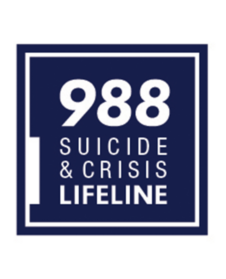[ad_1]
According to the National Council on Aging (NCOA), suicidal behavior is common in older adults for a number of reasons with loneliness topping the list. Many seniors are homebound and live on their own; are grieving the loss of a spouse or friend; lack nearby family; or have lost vital social connections during the Pandemic. These triggers can lead to severe depression that may increase thoughts of suicide.
What are the warning signs for someone at risk of suicide?
by Lisa Conway, RN, CCM – Aging Life Care Association®
This question has never been more important, as depression and anxiety are rising from the pandemic, unemployment, and other stressors. Since 2000, suicide rates have increased in all 50 states. Here’s a startling fact: Someone in the U.S. dies from suicide every 12 minutes. It is the second leading cause of death in our youth and the 10th leading cause of death overall for adults, particularly white men in late middle age (CDC, 2019).
Risk factors for suicide include depression, prior suicide attempts, substance abuse, weapons in the home, physical illness, or a family history of suicide. Research from the Substance Abuse and Mental Health Services Administration shows that while men are more likely to die by suicide, women are more likely to make the attempt. Still, people of any gender, age or ethnicity can be at risk.
There is some good news: The vast majority of people who attempt suicide — 9 in 10 — do not ultimately die by suicide. And everyone has a role to play in prevention.
If you are feeling suicidal, talk with a therapist, a support group, or your faith leader. All can provide perspective and a sense of hope, meaning and purpose. Just talking with someone can help you feel better and improve your mental health.
Develop a personal safety plan to help you through a crisis: Make a list of your personal warning signs, determine your best coping strategies, be around supportive people, contact a mental health professional, and ensure that your environment is safe.
Here are the warning signs of a person at risk for suicide:
- talking about wanting to die or suicide
- feelings of hopelessness or helplessness
- feelings of being trapped or a burden to others
- increased use of alcohol or drugs
- withdrawing or isolating
- giving away belongings
- extreme mood swings
If someone you know is exhibiting warning signs, it is important to talk with them directly. Ask them if they are thinking about killing themselves. Listen without judging and show that you care. If you determine that they are actively planning suicide, remove any objects that could be used in an attempt. Lastly, call 911 if you feel the person may be in imminent danger.
If you — or someone that you know — need help with feelings of suicide or depression, call 988. 988 is a new universal dialing code created to broaden access to lifesaving suicide prevention and crisis services. The code was made available to everyone across the U.S. on July 16, 2022. Dialing 988 connects people in crisis (or concerned friends, family, and caregivers) directly to the 988 SUICIDE & CRISIS LIFELINE (formerly known as the National Suicide Prevention Lifeline 1-800-273-TALK), where counselors provide free, unbiased, and confidential support 24 hours a day, 7 days a week. Dialing 988 is just like dialing 911 for emergency response or 411 for information services. There’s no need to dial any other digits besides those three.
About the Author: Lisa Conway, RN, CCM is the Vice President of Care Services for Senior Partner Care Services in Brevard County, Florida. In addition to her 25+ years of nursing experience, Lisa is ALF Core Trained and a Certified Care Manager. As an Aging Life Care Professional®, Lisa guides and advocates for families who are caring for older relatives or disabled adults. You can contact Lisa at lisa@oneseniorplace.com.
Disclaimer: This blog is for informational purposes only and does not constitute, nor is it intended to be a substitute for, professional advice, diagnosis, or treatment. Information on this blog does not necessarily reflect official positions of the Aging Life Care Association® and is provided “as is” without warranty. Always consult with a qualified professional with any particular questions you may have regarding your or a family member’s needs.
[ad_2]
Source_link

